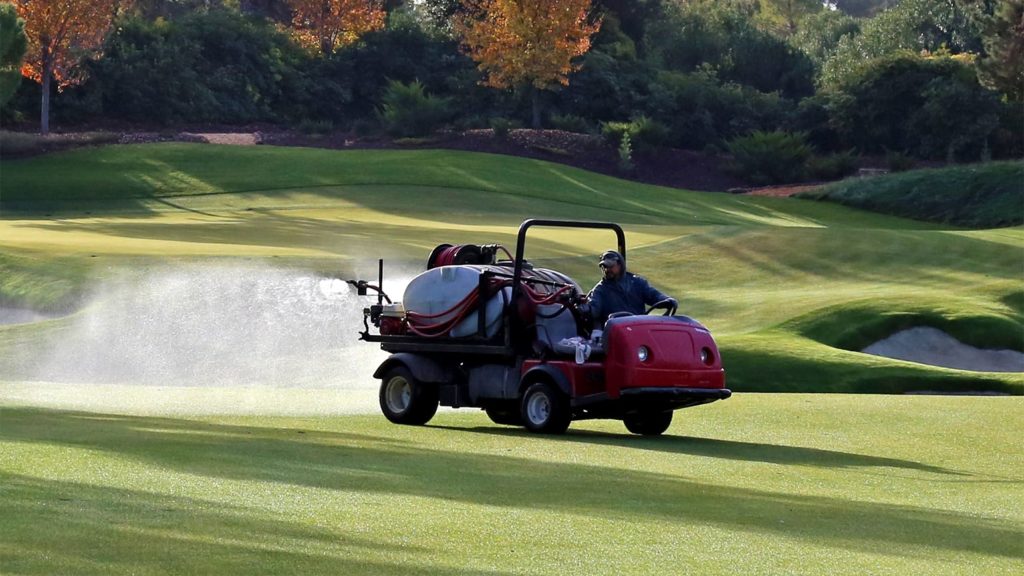USGA Update – Southeast Region

Superintendents across the Southeast are looking for ways to maintain their golf course with fewer staff members. Slowing flushes of warm-season turf growth with applications of trinexapac-ethyl – i.e., Primo MAXX® or post-patent products – is an important part of reducing mowing inputs and other labor costs. Getting the most out of these applications is more important than ever as every minute of maintenance is especially valuable during these challenging times.
The following five items are important ways to maximize effectiveness when applying trinexapac-ethyl for bermudagrass growth suppression:
Use a low carrier volume. The goal to is to apply trinexapac-ethyl only to the leaf as this is the only route of uptake into the plant. Any trinexapac-ethyl that hits the soil is lost. Therefore, apply trinexapac-ethyl in 20 to 30 gallons of water per acre. The finer the spray particle size, the more uptake and suppression you’ll get.
Lose the iron and calcium. Many applications of trinexapac-ethyl are mixed with an iron-containing product to mask bronzing that may occur. Unfortunately, iron and calcium harden water, which reduces trinexapac-ethyl uptake into the leaf and lowers growth suppression. The addition of iron and calcium does not render trinexapac-ethyl inactive, but it essentially decreases the activity at a given rate.
Mix in manganese. If you are worried about bronzing, tank mix a product that contains manganese rather than iron. Manganese and trinexapac-ethyl are compatible and will yield higher turf growth suppression than trinexapac-ethyl and iron.
Consider lowering your first application rates. When following these steps, you will find higher than usual suppression, so lower application rates of actual product should be used.
Boomless nozzles speed applications. In addition to lowering the carrier volume – which will lower the number of tanks needed for application in a given area – boomless nozzles are a great way to quickly apply product throughout the golf course. These 180-degree nozzles can be used without the need to raise and lower booms, which makes applications easier where maneuverability is limited. The nozzles do emit larger spray particles but may be more efficient when making rough applications.
Be sure to consider the method of trinexapac-ethyl application when trying to maximize effectiveness. When low carrier volumes are coupled with finer spray particles, lower product rates can be used because foliar coverage is maximized. Conversely, when larger carrier volumes are used, the coarser spray droplets result in reduced foliar coverage. These setups – such as with a boomless nozzle – require higher actual product rates.
Written by USGA Agronomist Addison Barden for the Green Section Record.
Southeast Region Agronomists:
Chris Hartwiger, director, USGA Course Consulting Service – chartwiger@usga.org
Steve Kammerer, Ph.D., regional director – skammerer@usga.org
Addison Barden, agronomist – abarden@usga.org